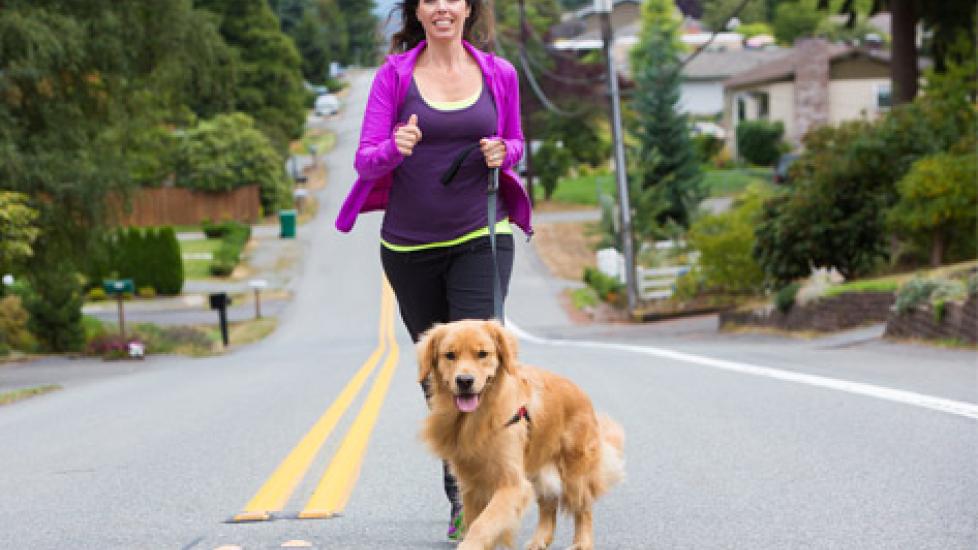How to Exercise with Your Dog
By Jessica Remitz
Though it may seem like your four-legged friend loves nothing more than to nap on the couch, dogs need regular exercise to stay healthy just like people do. From long evening walks to a daily game of fetch, starting a fitness routine with your pup — combined with feeding them a well-balanced, nutritious diet — will keep them happy and healthy for years to come.
Benefits of Exercise
Similar to people, one of the main health risks associated with a lack of exercise in dogs is obesity, says Susan O’Bell, DVM at the Angell Animal Medical Center in Boston. Dr. O’Bell also notes that dogs that go without regular exercise may be prone to a variety of behavioral issues, including destructive behaviors like barking, digging or chewing. Aside from preventing these issues, providing your dog with regular exercise supports healthy aging by easing chronic symptoms and allows them to be social and explore their environment.
“Many dog owners report that their dogs seem to be better behaved when they receive adequate daily exercise,” according to Dr. O’Bell. “Additionally, at least one study has shown that dogs who have hip dysplasia show less lameness if they have longer duration of exercise throughout the day.”
When to Start Exercising Your Dog
While it’s important to have your dog exercise throughout his or her life, you’ll want to keep in mind their life stage and fitness level before starting an exercise routine. Puppies under the age of three months, for example, should have off-leash time on soft surfaces such as grass or carpeting; stairs, meanwhile, should only be used sparingly. In fact, Dr. O’Bell points out that retrospective studies have shown use of stairs by puppies at this age may be a risk factor for future development of hip dysplasia in certain breeds. She also recommends saving long runs with your pup until they’re a bit older — between 10 and 12 months of age — to ensure their growth plates have closed.
Finding the Right Exercise Routine for Your Dog
The best kind and amount of exercise for dogs will vary greatly, depending on the dog's age, breed, and physical condition. Consult a veterinarian to devise the safest routine for your dog, especially with senior dogs, overweight dogs, or brachycephalic dog breeds like English Bulldogs, which are prone to overheating — particularly in warm weather.
There is, however, one type of exercise that both you and your dog can benefit from immediately: multiple walks outdoors every day. “Unless a veterinarian has told you otherwise,” Dr. O’Bell says, “pet owners shouldn’t underestimate the power of briskly paced walks throughout the day.”
Additional forms of daily activity can include swimming, a game of fetch and mental exercise such as food puzzles or basic obedience training. Agility training and competitive events can also be beneficial forms of exercise, but only if you’ve done your homework. “Owners should take time to educate themselves on what agility or other dog sports entail,” says Dr. O’Bell. “…and should participate in gradual training programs, as one would with any sport.”
Lastly, coordinate with a veterinarian on a balanced diet that is appropriate for the exercise routine your dog is about to undertake. This will help boost your dog's energy level and, if weight loss is also a goal, assist in shedding the excess fat. Now get out there and start exercising with your dog!
More to Explore
7 Healthy Ways to Give Your Dog Treats
How Can You Tell Your Pet is Overweight?
